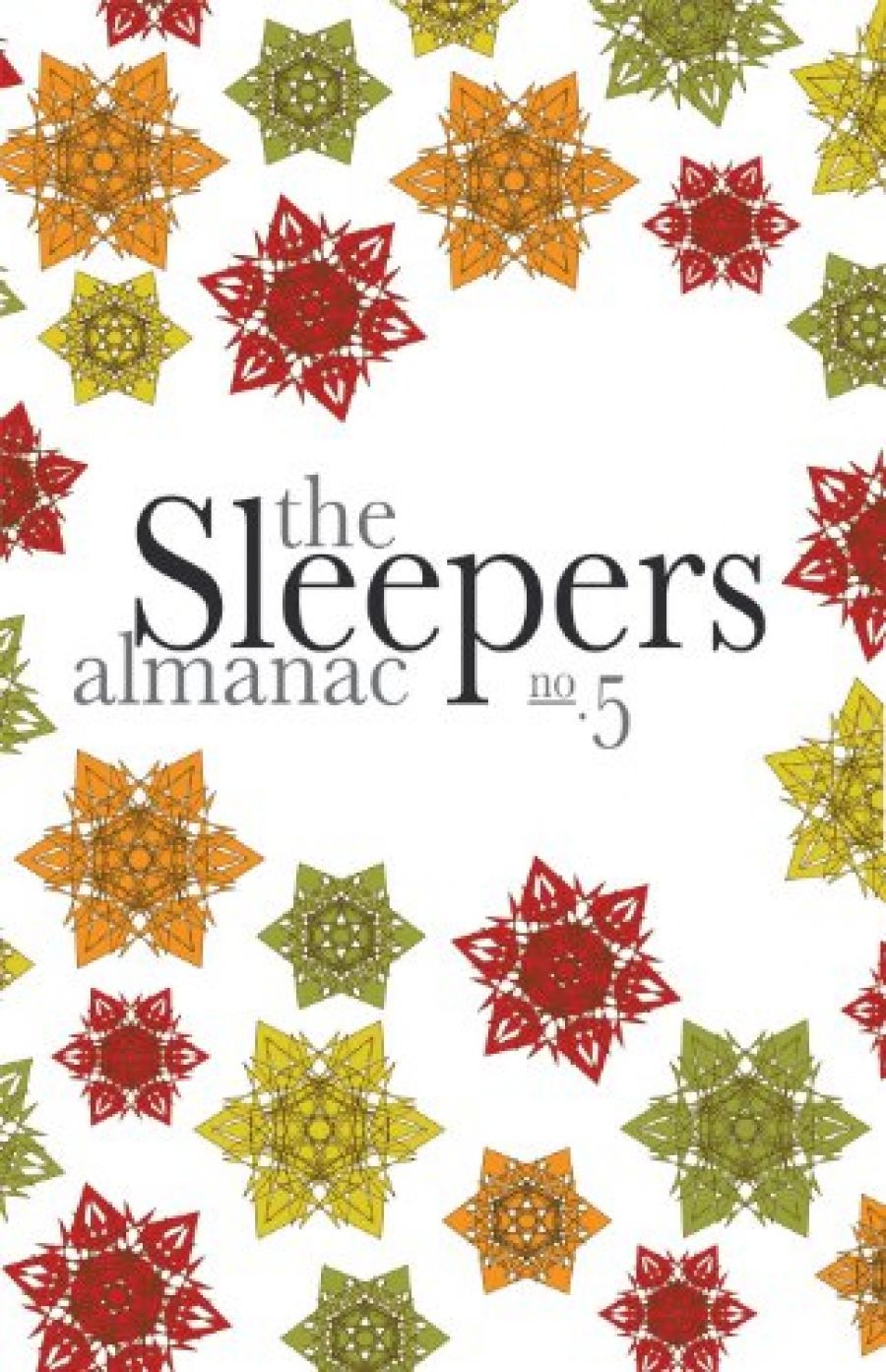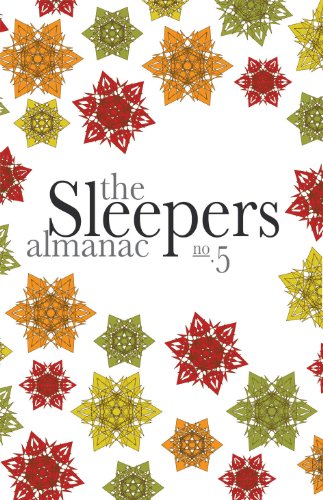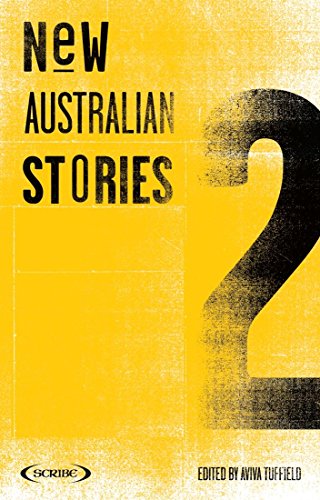
- Free Article: No
- Contents Category: Short Stories
- Review Article: Yes
- Article Title: How to quantify quality
- Online Only: No
- Custom Highlight Text:
What makes a good short story? Zoe Dattner and Louise Swinn, editors of the fifth Sleepers Almanac, say there is no objective measure of quality; that everyone likes something different; and that they simply choose what appeals. As I sit down with their funky-looking volume, I don’t want to believe it. If that is the case, there is no place for literary critics, no real justification for academic literary study, and the premise for an editor’s judgement is shaky. Why should what they like matter particularly?
- Book 1 Title: The Sleepers Almanac, No. 5
- Book 1 Biblio: Sleepers Publishing, $24.95 pb, 300 pp
- Book 1 Cover Small (400 x 600):

- Book 1 Cover (800 x 1200):

- Book 2 Title: New Australian Stories
- Book 2 Biblio: Scribe, $29.95 pb, 330 pp
- Book 2 Cover Small (400 x 600):

- Book 2 Cover (800 x 1200):

At the end of each story, I furiously scribble adjectives like ‘evocative’, ‘atmospheric’, ‘emotionally-realistic’, ‘resonant’, ‘unbelievable’, ‘superficial’ and so on. My measure appears to be how emotionally searching a piece is, how carefully it conjures an experience normally difficult to communicate. But whether or not this experience strikes me as realistic is, in the end, surely dependent on my own life experience, or at least what I imagine to be possible, an entirely subjective measure.
Part of Almanac’s brief is to publish emerging writers. They do this well. The talented wordsmith Richard Lawson has produced another understated, convincing story, this time about a high school teacher who moves from the private to the public system. Funny and tragic, it is titled ‘Don’t Smile Till Christmas’. Jo Bowers packs a lot of story (and emotion) into three pages. Jo Case, in the aptly titled ‘Hell is Other Parents’, and Max Barry write engrossing stories that dramatise the volatility of parenthood. Virginia Peters writes exceptionally well on this subject; hers is horror story and realism combined. Rose Mulready’s ‘Welcome to Romance Writing 1A’ is very funny; she has a comedian’s timing.
In ‘Pink’, Leanne Hall writes with an emotional honesty that I sometimes found wanting early in the Almanac. A particular character-type recurs in collections of this kind: obsessive, odd and socially isolated, full of wonder at the meaninglessness of life. This character finds beauty in random things which bespeak modernity’s decay, such as cracks in the pavement or reality television. It may be postmodernism’s answer to romanticism’s childlike innocent. The overall effect is quirkiness. The frequency with which these stories are published suggests a wide-spread fascination with this type, but I find such romanticised anxiety, such beautiful neurosis, a tad tiring.
This is not to say that the short story writer should have no truck with mental instability. Kalinda Ashton’s ‘Missing’, perhaps this collection’s highlight, does so with immense sensitivity. The story’s artfulness is not urgently pressed upon the reader, despite Ashton’s considerable ability to control language. We are led, in good time, through an individual’s confused experience of the world. Sleepers has chosen well in Ashton for its foray into novel publishing. Illustrated ‘Haiku Angst’, by Oslo Davis, is witty (‘Radio talk-back / About callers’ dreams: I want / To rip my ears off’) and Melissa Beit, Ian C. Smith, and S.J. Finn conclude the Almanac in real style. In just five years the editors have metamorphosed from two professional-writing graduates with an idea, to one of this country’s most important short story publishers.
New Australian Stories takes things up a notch. There is perhaps less technical innovation in this collection, yet – generally speaking – more emotional range. Here you will find some of Australia’s most accomplished short story writers, ones who really know how to capture a reader, structure a narrative, portray multidimensional characters and script believable dialogue; writers who say something illuminating or stimulating about their society or culture.
Such is the case with Cate Kennedy. Her opening story feels real; physical and emotional pain bristle on the page. We see how easily someone, in this case an accommodating farmer’s wife, can live in conflict with their own emotions. The depiction of a wife’s ‘secret’, unhappy, yet concealed inner life, is also done masterfully elsewhere in this collection, providing something of a theme. Virginia Peters, who writes so well for the Almanac, here pens another portrait of marriage, and the mannerly art of spousal interaction: ‘Fucking Bozo, I think, and I want to laugh, cause he’s got no idea, no idea at all what goes on in my head.’ Titled ‘The House Guest’, it shares with Helen Garner’s recent novel about her house guest an interest in the way the home is so often an emotionally charged space for women, only awkwardly able to accommodate intrusions. Vivienne Kelly also sensitively evokes the inner anguish of her protagonist, a middle-aged, married mother. She delivers a killer final line.
‘The Art of Convalescence’, by Amanda Lohrey, is a particularly pleasurable and memorable reading experience. Lohrey assesses the value of public institutions, specifically the public health system and public radio, animating those rare moments when ‘feeling’ still comes free, or from taxes. Isabelle Li’s ‘A Fishbone in the Throat’ is spare, sad and affecting. Pierz Newton-John’s story ‘Salt’, about a carer, is impressive, even better than his melancholy ‘White Summer’, published in the Almanac. Also reappearing is Max Barry, whose stories seem to specialise in redeeming initially reluctant first-time fathers. I found this redemption a little contrived, but he is an undeniably good writer.
There are, of course, too many fine stories to mention. What, lastly, must be mentioned are some particularly original stories, such as Abigail Ulman’s well-executed depiction of developing female sexuality and the seemingly timeless allure of male authority; as well as the story about a visiting anthropologist to the island of Nethy Bothy (population: three) by Melissa Beit, another Almanac writer. Beit’s imaginative ability is striking, and her take on cultural authenticity thought-provoking. G.L. Osborne displays a gentle, nuanced approach in her piece about the relationship between an older man and woman, and two young parking attendants. Paul Morgan’s story centres on the tallying up of a former antique dealer’s estate, but speaks volumes about changing Australian responses to the exoticism of Asia. Georgia Blain, Brenda Walker and many more write so well in this collection. I wholeheartedly recommend it.


Comments powered by CComment